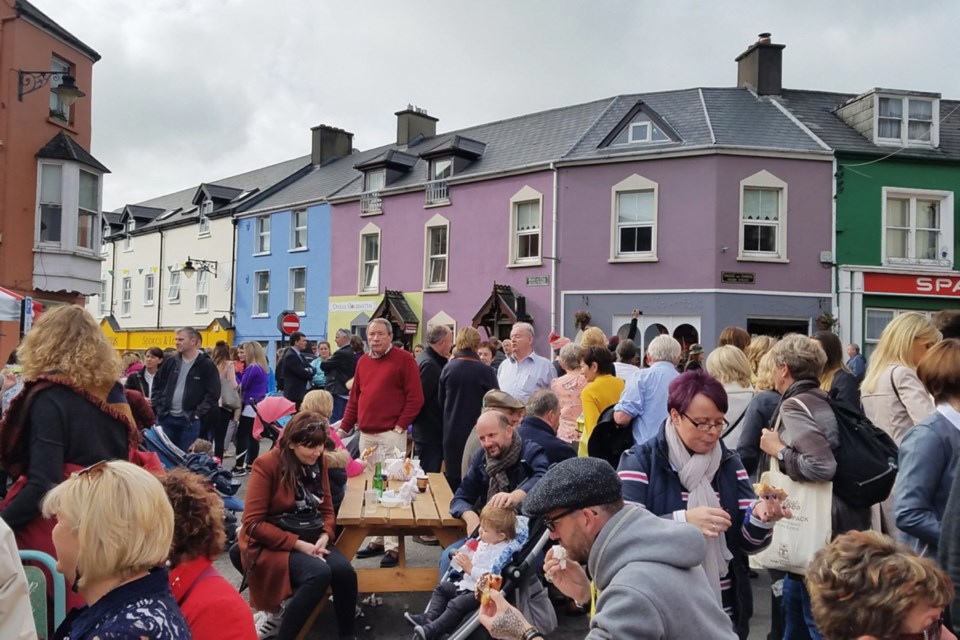Irish cuisine has long been the fodder of jokes тАФ a kind of penance to suffer through in order to enjoy the people, music and lush scenery of the Emerald Isle. But thatтАЩs an outdated notion: Travellers today find fresh, inventive, flavourful meals there тАФ and many Irish towns are working to establish themselves as foodie destinations.
Long considered the land of potatoes, Ireland once had a diet that reflected the countryтАЩs dire economic circumstances. Though potatoes are still important here, thereтАЩs no longer a reliance on them, and modern Irish menus often replace potatoes with rice or pasta.
And Ireland has much more to offer: Irish beef, lamb and dairy products are among the EUтАЩs best. Streams full of trout and salmon and easy access to saltwater fish and shellfish mean a bounty of seafood.
With these fine ingredients, Irish chefs work hard to put their cuisine on the map. Expatriates have come home with newly refined tastes, and immigrants have added a world of interesting flavours.
When IтАЩm in Ireland, I like to start my day with an old-fashioned тАЬIrish FryтАЭ (or an тАЬUlster FryтАЭ in the North). ItтАЩs a tasty reminder of IrelandтАЩs workaday roots.
This big fried breakfast тАФ traditionally what farm workers ate to get them through a day in the fields until dinner тАФ is jokingly referred to as a тАЬheart attack on a plate.тАЭ
With eggs, bacon, sausage a grilled tomato, saut├йed mushrooms, and optional black pudding (sausage made from pig blood), itтАЩs no light fare. To top it off, itтАЩs served with juice, tea or coffee, cereal and toast with butter and marmalade.
These days, few Irish folks start their day with such a feast (and thankfully, itтАЩs easy to find healthy alternatives in Ireland), but indulging in the occasional fry-up is one of the joys of my trips here.
Be sure to try each regionтАЩs culinary specialty. Galway is famous for its oysters (with an annual oyster and seafood festival), Kerry and Dingle have excellent lamb and County Wexford claims the best strawberries (buy some from a roadside stand in spring or summer).
And all across Ireland, youтАЩll encounter traditional delicacies such as tripe and black pudding. These kinds of quirky foods come from the off-cuts of meat тАФ and the Irish proudly turn the trimmings into delicacies.
A good menu incorporates local and seasonal ingredients. These days, youтАЩll find everything from risotto to tapas and Asian-fusion dishes on the menu. Restaurants typically provide a three-course menu, a good-value early-bird special and regional specialties.
When it comes to pub grub, these days it can be IrelandтАЩs best eating value. This hearty comfort food is served in friendly surroundings for about $20 a plate.
Pub menus consist of traditional dishes, such as Irish stew (mutton with mashed potatoes, onions, carrots, and herbs), fish and chips, bangers and mash (sausages and mashed potatoes), and coddle (bacon, pork sausages, potatoes and onions stewed in layers).
In Dublin, you can enjoy your Guinness stew alongside traditional music, with experiences such as the Musical Pub Crawl Dinner show. The venerable Brazen Head pub also hosts a тАЬFood, Folklore and FairiesтАЭ evening (more culturally highbrow than it sounds), where a filling three-course meal is punctuated by soulful Irish history and fascinating Irish mythology, with occasional live trad tunes in between.
Kinsale, in the south of Ireland, is one of the countryтАЩs gourmet capitals, offering a satisfying mix of upscale traditional fare and creative modern cuisine. Local competition is fierce, and restaurants offer inventive, tempting menus.
In the ever-changing restaurant scene, itтАЩs worth a short stroll to assess your options, from cheap and cheery to white-tablecloth elegant. In this seafaring town, seafood is king. The most popular restaurant in town is Fishy Fishy Caf├й, buzzing with the energy of happy diners savouring a taste of the sea. You have to love a restaurant that displays photos of the people who catch its fish.
In coastal towns such as Kinsale, I look for seafood chowder, pan-fried hake, and banoffee pie (made with bananas, cream and toffee). IrelandтАЩs famous cake-like, dense soda bread complements these meals wonderfully.
Dingle is another popular foodie destination with eclectic eating experiences in a charming seaside setting. During the first weekend of October, the Dingle Food Festival features everything from Russian borscht to kangaroo skewers in a huge and impressive celebration of food. Pubs and restaurants serve up signature dishes from tents around town, and thousands mingle through DingleтАЩs colourful streets, enjoying some of IrelandтАЩs finest and most creative bites.
Today, eating in Ireland is a rewarding cultural experience тАФ and the secret is getting out, so make reservations for any restaurant you want to enjoy.
Come hungry, and take advantage of the foodie delights Ireland is serving up.
Rick Steves (ricksteves.com) writes European travel guidebooks and hosts travel shows on public television and public radio. Email him at [email protected] and follow his blog on Facebook.
